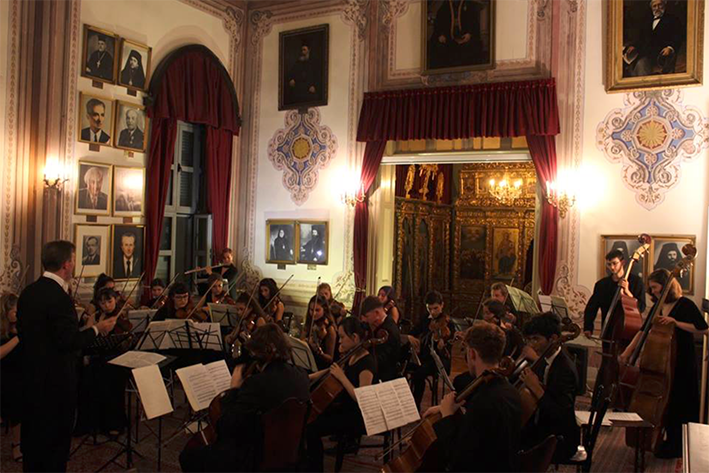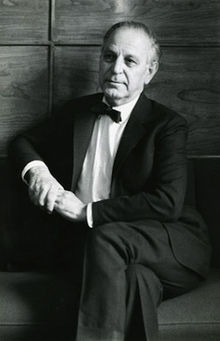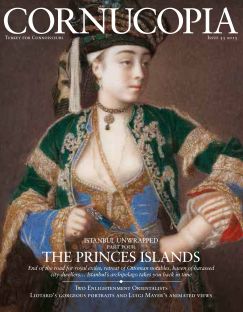In September I attended a concert in the old Greek seminary on the island of Heybeli (photographed here by Monica Fritz). Heybeli has always been my favourite among the Princes’ Islands, those oases of peace and quiet in the Sea of Marmara that face the beskyscrapered coastline stretching eastwards from Kadıköy, on the Asian side of the Bosphorus, towards the Gulf of İzmit. Just like Büyükada (known as Prinkipo in Greek), its slightly larger neighbour, Heybeli enjoys not just a profusion of trees but also a relative freedom from motor vehicles that enormously enhances the pleasure of being at a civilised remove from the megapolis. Indeed, one can look out towards the mind-numbing profusion of competing towers on the mainland and think: 'You can keep all your spanking new residences and exciting real-estate opportunities. I’m well out of it.' Like a cat that has leapt up onto a wall just out of the reach of a pursuing dog, you can sit there and thumb your nose at the urban jungle. Eat your heart out, city of the dreaming rabbit cages.
The Dorset poet William Barnes said it all in his poem Linden Lea, a classic of pastoralist escapism that was set to music by Ralph Vaughan Williams (of whom more anon):
Let other folk make money faster
In the air of dark-room'd towns;
I don’t dread a peevish master,
Though no man may heed my frowns.
I be free to go abroad,
Or take again my homeward road
To where, for me, the apple tree
Do lean down low in Linden Lea.
I first visited the Princes’ Islands in the spring of 1977, shortly after my arrival in Istanbul at the end of 1976 – the year in which John Freely, author of the celebrated guidebook Strolling Through Istanbul, left the city. One chapter of his book Stamboul Ghosts: A Stroll Through Bohemian Istanbul, recently published by Cornucopia, is about Büyükada and the various exiles who have ended up there. Among these was one Leon Trotsky, who lived on the island from 1929 to 1933, after being expelled from Russia.
It was here, in fact, that he wrote his autobiography and began his three-volume History of the Russian Revolution. Soon after he left, he wrote the following:
Prinkipo is an island of peace and forgetfulness. The life of the world reaches here after long delays and hushed down… Prinkipo is a fine place to work with a pen, particularly during autumn and winter when the island becomes completely deserted and woodcocks appear in the park. Not only are there no theatres here, but no movies. Automobiles are forbidden. Are there many such places in the world? In our house we have no telephone. The braying of the donkey acts soothingly upon the nerves. One cannot forget for a moment that Prinkipo is an island, for the sea is under the window, and there is no hiding from the sea at any point in the island. Ten metres away from the stone fence we catch fish, at fifty metres – lobsters. For weeks at a time the sea is calm as a lake.
Stamboul Ghosts: A Stroll Through Bohemian Istanbul is a highly recommended read, punctuated by the late Ara Güler’s captivating and (for someone who remembers what Istanbul was like in the 1970s) achingly nostalgic black-and-white photographs.
One feature of the Princes’ Islands is, of course, the presence of a large non-Muslim community, and it was the Ruhban Okulu, a seminary for Greek Orthodox priests on Heybeli, that was the venue for the concert I attended on September 29. This fine building, opened in the year 1844, sits at the top of one of the island’s two hills, and is visible among the surrounding trees as the boat brings you to Heybeli’s main settlement (too small to be called a town) from the neighbouring island of Burgaz.
After alighting at the quay and taking refreshment at one of the cafés on the seafront, my companion and I ascended the hill in a fayton – a carriage drawn by two horses. As we climbed the winding road between the pines there were spectacular views towards the southern end of Heybeli, to Burgaz on our right, and to the open sea beyond the two islands. Arriving at the seminary on the hilltop, we sat on a bench outside the building to drink our fill of this tree-framed prospect as the sky began to darken and distant lights sparkled in the water.
Then it was time for the concert, and we found the main hall of the seminary to be yet another visual delight. Its high walls are covered in oil paintings of Greek Orthodox priests in full regalia – presumably past directors of the institution – and photographs of various lay dignitaries.
Here is a video of the Ruhban Okulu with a commentary in Turkish. We are shown the journey by carriage up the hill, and at 5:07 the footage of the seminary begins. We see the main hall at 8:13, and at 10:48 we are shown round the church attached to the seminary, with its many icons:
When the orchestra began to assemble, it was clear it would not be a large one. Given the confined space at the front of the hall, this was no bad thing. In fact, the ensemble consisted of 19 teenage string players from the Purcell School for Young Musicians in Bushey, Hertfordshire, and nine from the Turkish National Youth Philharmonic Orchestra – a far smaller number than the 83 who had made up the full orchestra at the concert I attended on September 4 (described in my blog on the event, Hidden Talents). The main sponsor of the concert on Heybeli, by the way, was the Municipality of Kartal, the area of the mainland lying opposite the Princes’ Islands.
Dr James Ross, the conductor at the seminary on September 29, has performed more than 1,000 works in 18 countries throughout Asia, Africa, Europe and North America. He is artistic advisor of The Commonwealth Resounds, a British NGO described as enabling music students to ‘perform, develop cultural awareness and build partnerships with their peers worldwide’. Since 2005 this outfit has worked in Malta, Uganda, Trinidad, Sri Lanka, Australia and the UK, and is currently planning tours to Antigua and Rwanda in collaboration with the Purcell School.
Before the music began, we were shown a short video on the activities of the Islands Children’s Orchestra, featuring children from primary and middle schools on Heybeli and Büyükada, and supported by the Islands Municipality and the Music Foundation for Peace. Then the projection screen was rolled up and taken away – to reveal a roomful of richly-coloured, gold-framed icons directly behind it. Another visual hit!

Source: james-ross.com/turkey
The first item on the programme was a piece entitled Old Bazaar by Aslı Emre, a 15-year-old Turkish student at the Purcell School. This was followed by the first two movements – the Overture and Rondeau – from Henry Purcell’s 1695 Abdelazer or The Moor’s Revenge, a suite of incidental music to accompany the play of the same name by the dramatist, fiction writer and poetess Aphra Behn (1640–89), who may well have been the first Englishwoman to earn her living by writing. The Rondeau was in fact used by Benjamin Britten as the basis for his 1945 composition The Young Person’s Guide to the Orchestra. Here is a performance of the full Purcell suite by The Academy of Ancient Music:
Next on the menu was the first movement of Ulvi Cemal Erkin’s Sinfonietta, written between 1951 and 1959. Ulvi Cemal Erkin (above), born in Istanbul in 1906, was sent to receive musical training in Paris after winning a competition held by the Turkish Ministry of Education in 1925. In Paris he studied composition at the Ecole Normale de Musique with the famous Nadia Boulanger.
The British musicians did not seem to find the rhythms of the Turkish pieces at all easy. This is perhaps not surprising, as they were not brought up to hear – let alone dance to – pieces in 7/8 time. And I have to say that Ulvi Cemal Erkin’s Sinfonietta is not his most felicitous attempt to adapt his country’s folk music to a Western mould. Like other Turkish composers of his time, he tends to make too much use of parallel fifths, and an unrelieved diet of musical primitivism is not always easily digestible. His Ninni (‘Lullaby’) and Zeybek Türküsü (1929-1932), written in Paris, his String Quartet (1935-1936), and his Köçekçe (a dance rhapsody for orchestra composed in 1943), are perhaps more successful.
At the risk of being branded an enemy of Turkish culture, I will say that I am not particularly impressed by the efforts of the Turkish composers of Erkin’s generation, however much they may be lauded to the skies by those wishing to establish ‘Western’ credentials for a people whose music does not, frankly, need them. In my view, Turkey’s native folk melodies are absolutely magnificent – especially when left alone in their monophonic purity, and most especially when listened to on sleepless 20-hour bus journeys through Anatolia.
It was only in the next item – Carl Philipp Emanuel Bach’s Flute Concerto in D minor – that the orchestra got into its stride. In this piece, probably written in 1747 while the composer was in the employ of Frederick the Great, King of Prussia, the solo part was ably performed by Hannah Capstick, a student at the Purcell School. The fiery last movement (which must have severely taxed the abilities of the composer’s royal patron, an amateur flautist) is said to be a precursor of the Sturm und Drang style that would come into fashion later in the 18th century. In this video, the soloist is James Galway:
The last boat from Heybeli back to central Istanbul leaves at 8.45pm. It was this fact that prompted my departure – and that of my companion, who had fallen asleep during the slow movement of the flute concerto owing to a merciless daytime schedule in the recording studio – during the interval. We were thus deprived of the opportunity to hear the second half of the programme, which consisted of Vaughan Williams’s Fantasia on a Theme of Thomas Tallis, Elgar’s Introduction and Allegro, and Bartók’s Romanian Folk Dances. All I can do, therefore, is provide some links to performances of these works by other orchestras, with a brief description of each one.
The Fantasia on a Theme by Thomas Tallis was first performed in Gloucester Cathedral in 1910. Herbert Brewer, the cathedral’s organist, apparently described this highly unusual and intensely atmospheric piece as ‘a queer mad work by an odd fellow’. Here, it is being played – in that same cathedral – by the BBC Symphony Orchestra, conducted by Andrew Davis. The setting, the acoustics and the muted lighting add greatly to the effect of this remarkably original, well-conceived and inventively orchestrated work, which is based on a theme by the British composer Thomas Tallis (c.1505-1585). The musicians are divided into three groups: a string quartet, the main orchestra, and a separate nine-player ensemble:
Elgar’s Introduction and Allegro for Strings always puts me in mind of walks along the ridge of the Malvern Hills in the composer’s native county, Worcestershire. (On one occasion, the sole of one of my shoes all but parted company with the uppers, and I flapped and hobbled all the way back to the town of Malvern.) I will quote the programme notes verbatim:
Elgar wrote this music as a tribute to the virtuosity of the newly-founded London Symphony Orchestra’s string section in 1905. His wife, Alice, wrote after the first performance: ‘Many people think it the finest thing he has written, the quartet comes in with so beautiful an effect, the peroration towards the end is fine.’ The music opens with immense rhetorical power; a quiet, melancholy Welsh tune is then introduced by a solo viola, following which the main ‘Allegro’ starts. In the middle, there is what Elgar called ‘a devil of a fugue’, then a shortened reprise of the ‘Allegro’. The music ends with a grand return of the ‘Welsh’ theme.
In this performance, the Hallé Orchestra is conducted by Sir John Barbirolli. This is a combination for which I have a special affection as I frequently heard it in action at the Free Trade Hall in Manchester in the 1960s:
The final item on the programme was Béla Bartók’s Romanian Folk Dances, based on fiddle tunes he collected in various parts of Romania between 1909 and 1913. The work, divided into seven short, contrasting sections, was composed in 1915. Bartok was fascinated by the folk music of many countries, and in 1936 he travelled throughout Anatolia – especially the Yürük (nomad) district around Adana – to collect folk songs. In this video the Romanian Folk Dances are played with an authentic flavour by Hungarian musicians:
As my companion and I walked back down the hill from the Ruhban Okulu in the darkness, we were passed by a slow-moving police car – the only vehicle we had seen on Heybeli. The dogs which had barked so enthusiastically at our carriage on the way up had now fallen asleep, and we ourselves reached the quayside in relaxed mood just as the ferry was rounding the northern corner of Büyükada and making its way towards us, ready to carry us back to the Galata Bridge – and home.
Also see James Ross (2017): Two Concerts in Istanbul: Young Musicians Demonstrate Excellence and Community.

_620_418_85.jpg)
















